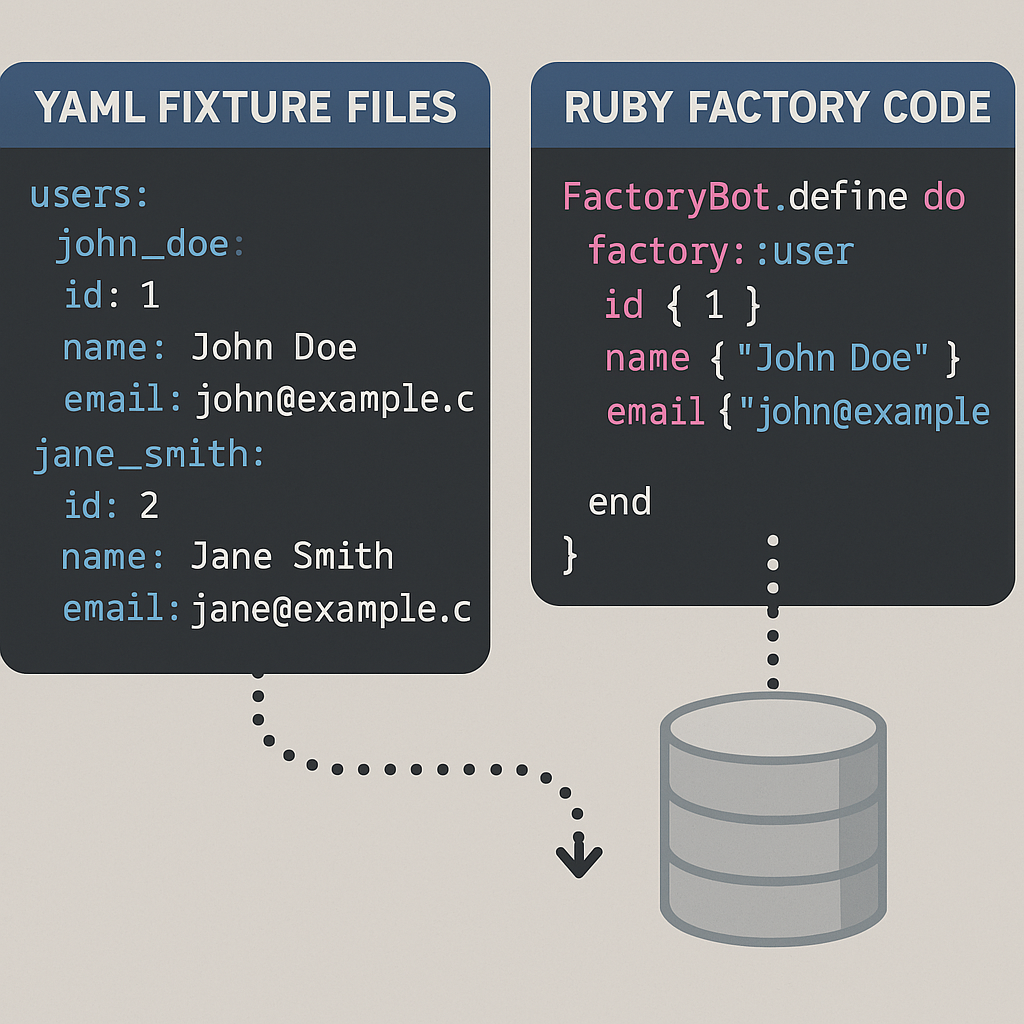What is the difference between Fixtures and Factories in Ruby on Rails tests?

Testing is a crucial part of any Rails application, and having the right test data can make or break your test suite. Two popular approaches for setting up test data in Rails are fixtures and factories. While they both serve the same purpose - providing test data - they do so in fundamentally different ways. Let's dive into what makes each unique and when you should reach for one over the other.
What are fixtures in Rails?
Fixtures are pre-defined, static data stored in YAML files that Rails loads into your test database before running tests. Think of fixtures as a snapshot of data that remains consistent across your test runs.
How fixtures work
Fixtures live in the test/fixtures directory of your Rails application, with each file corresponding to a specific model. Here's a simple example of what a fixture file for a Post model might look like:
rails_announcement:
title: Rails 7 Released
content: Exciting new features in Rails 7!
published_at: <%= Time.current %>
author_id: 1
ruby_tips:
title: Ruby Performance Tips
content: How to make your Ruby code faster
published_at: <%= 2.days.ago %>
author_id: 2Rails automatically loads these fixtures into your test database and makes them accessible through helper methods in your tests:
require "test_helper"
class PostTest < ActiveSupport::TestCase
test "post has comments" do
post = posts(:rails_announcement)
assert_equal 2, post.comments.count
end
endNotice how we access the fixture with posts(:ruby_tips) - Rails creates these dynamic methods for us based on the fixture names.
What are factories in Rails?
Factories, typically implemented using the FactoryBot gem (formerly FactoryGirl), dynamically generate test data on demand. They follow the factory method pattern, providing a flexible way to create objects with sensible defaults that can be overridden as needed.
How factories work
Factories are defined in Ruby files, usually in the spec/factories or test/factories directory. Here's how you might define a factory for the same Post model:
FactoryBot.define do
factory :post do
title { "Sample Post Title" }
content { "This is the content of the post" }
published_at { Time.current }
association :author, factory: :user
# Define a trait for posts with comments
trait :with_comments do
after(:create) do |post|
create_list(:comment, 2, post: post)
end
end
end
end
FactoryBot.define do
factory :comment do
content { "This is a comment" }
association :post
association :author, factory: :user
end
endIn your tests, you can create instances using these factories:
require 'rails_helper'
RSpec.describe Post, type: :model do
it "has associated comments" do
post = create(:post, :with_comments)
expect(post.comments.count).to eq(2)
end
endSummary
Fixtures and factories are both valuable tools in your Rails testing toolkit, each with distinct advantages:
- Fixtures provide fast, consistent test data through static YAML files. They're great for simple data needs and performance-critical test suites, but can become unwieldy as data complexity grows.
- Factories offer dynamic, flexible test data generation that respects validations. They excel at creating varied test scenarios and complex object relationships, but come with a performance cost.
The best approach often depends on your specific project needs. Many teams find success using fixtures for reference data and factories for domain objects, combining the performance benefits of fixtures with the flexibility of factories.
Remember that the goal of test data is to make your tests clear, maintainable, and reliable—choose the approach that best serves those goals for your project.
Happy testing!